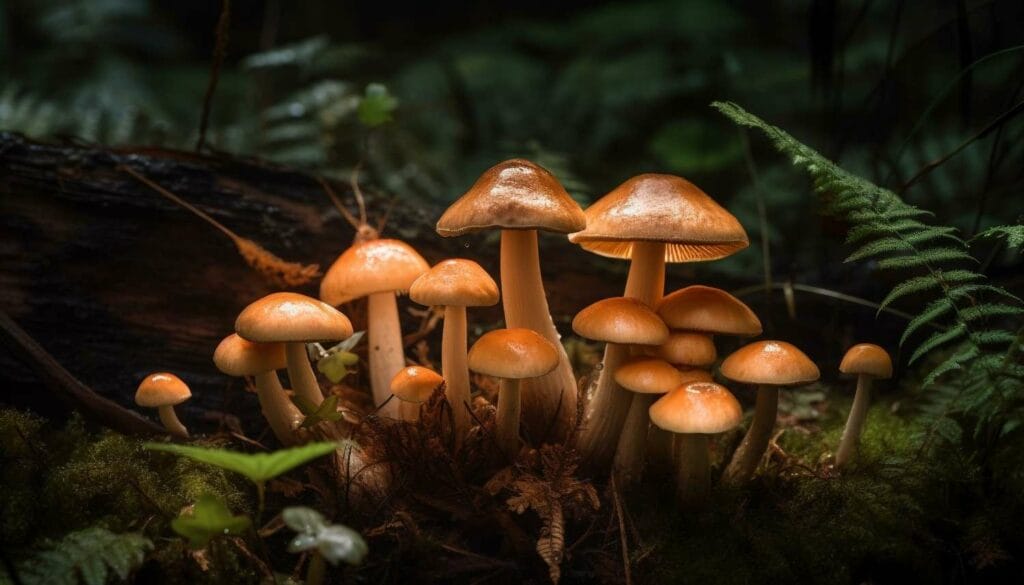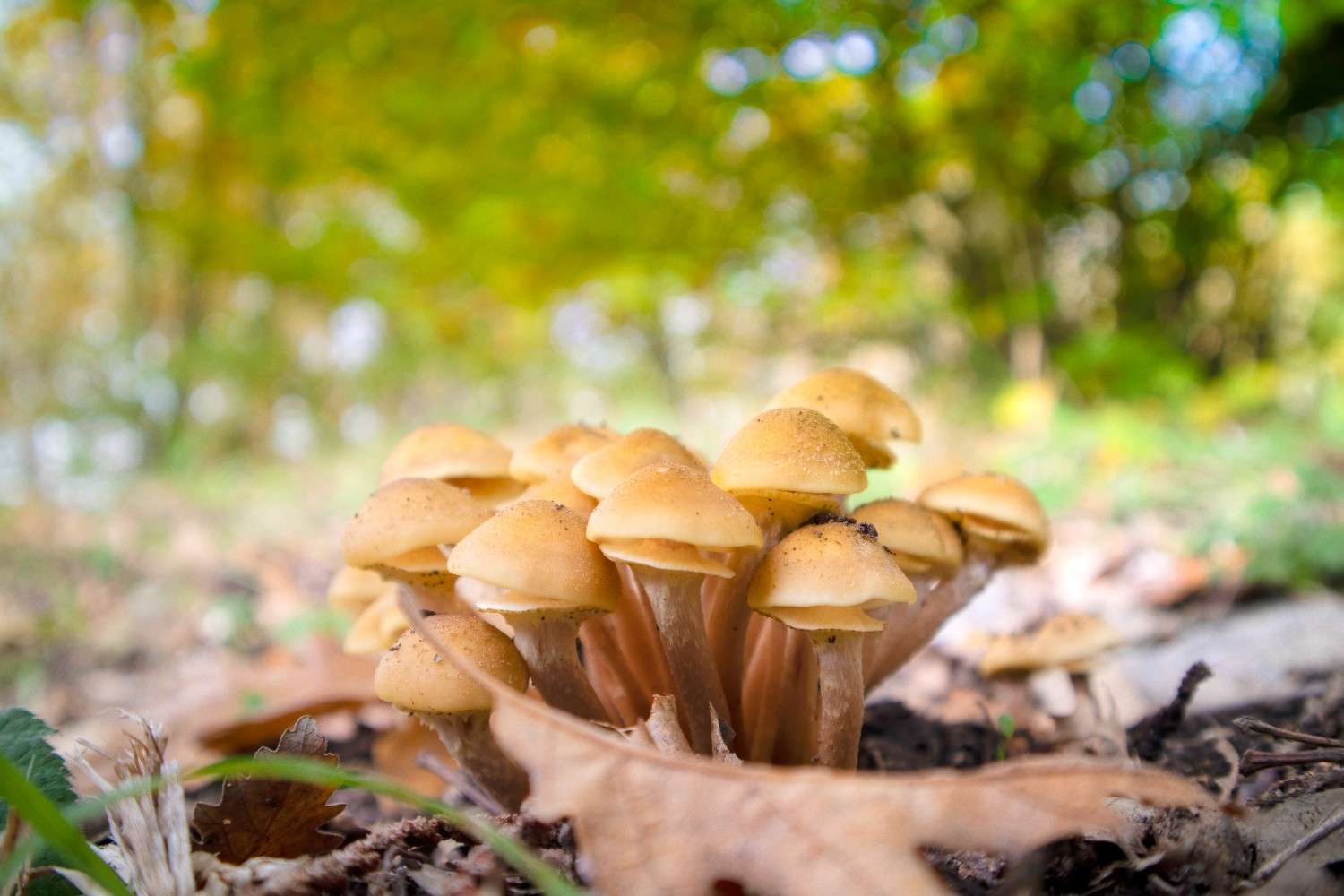Shrooms Canada has lately garnered widespread recognition, drawing significant investments aimed at its potential medical uses, expediting scientific research, and cultivating increasing societal acceptance.
The growing prominence of psilocybin mushrooms as a frequently utilized psychoactive substance is highlighted in two recent studies.
Eric Leas, an epidemiologist at the University of California, San Diego, noted a 1,250% increase in internet searches related to microdosing since 2015, with psilocybin outpacing LSD in 2019. In addition, a study by the RAND Corporation indicates that around 3% of Americans – approximately 8 million adults – used psilocybin in the preceding year, making it the most commonly consumed hallucinogen in 2023.
Let’s explore the global fascination with shrooms.
[toc]
Understanding Microdosing
Psychedelic microdosing refers to the act of taking a minimal quantity of a hallucinogenic substance to achieve a positive mental effect without experiencing a full psychedelic trip. This typically involves taking only 10-20% of a dosage that would trigger a psychoactive response. The goal is to consume a small amount of a psychedelic that doesn’t significantly alter consciousness.
Historically, microdoses of magic mushrooms and peyote have been used to relieve physical discomfort and promote well-being. In the 1960s, the practice of microdosing expanded to include LSD as people sought to boost cognitive performance and creativity.
Currently, microdosing includes substances like MDMA, Ritalin, cannabis, and ketamine, which can cause hallucinations at higher doses but don’t initiate a full psychedelic experience when microdosed.
Comparing Microdosing and Full Dose Experiences
| Aspect | Microdosing | Full Dose (Psychedelic) | |
| Dosage | 0.1 to 0.3 grams of dried mushrooms | 1 to 3 grams or more of dried mushrooms | |
| Frequency | Regular (e.g., every few | Frequency of Use | Occasional |
| Effect Duration | Minimal interference with regular activities | State of alteration lasts for 4-6 hours | |
| Sensory Effects | Induces hallucinations (misinterpreted or non-existent sensory perceptions), intensifies emotions and sensory experiences (brighter colors, amplified sounds), and prompts synesthesia (such as “seeing” sounds or “hearing” colors) | Minor sensory alterations, subtle mood and perception improvements, and enhanced concentration and creativity | |
| Physical Effects | Little to no physical impacts | Increased energy and heart rate, and sensations of nausea |
The Rise of Psilocybin Microdosing
Approximately half of those who used psilocybin in the past year adopted microdosing, a practice favored by tech industry workers and suburban mothers. Microdosing involves consuming 1/10 to 1/20 of a full dose. The majority of microdosers take psilocybin only once or twice a year, with a scant 11% using it more than six times. Over half prefer whole or dried mushrooms, while the rest use processed forms such as chocolate bars or teas.
The interest in microdosing is connected to the changing laws surrounding cannabis and psychedelics. In states like Oregon and Colorado, where plant-based psychedelics have been decriminalized, the interest in microdosing is the most pronounced.
Studies suggest an increase in psilocybin consumption, notably in nightlife settings, where it competes with drugs like ecstasy and ketamine. A research estimated that 5.5 million adults consumed hallucinogens in 2019, with a significant rise in LSD consumption.
Key Influences Behind the Growing Microdosing Trend
The RAND survey pinpointed the top three reasons why Canadians consume psilocybin:
Enjoyment and Social Interaction
A large number of Canadians take these psychedelic mushrooms for recreation, seeking a unique collective experience. The communal nature of consuming psilocybin at group events or social gatherings adds to its appeal.
Mental Health
A significant number of consumers turn to psilocybin for its potential mental health advantages. Indeed, an observational study in Nature-Scientific Reports Trusted Source indicates that microdosing psilocybin mushrooms
Teas provide a comforting, traditional method for consuming psilocybin, offering both quick absorption and ease of preparation.
- Method of preparation: Psilocybin-rich mushrooms are steeped in hot water to produce the tea.
- Dosage: The strength of the tea can be adjusted according to the amount of mushrooms used, providing flexibility in dosing.
- Method of intake: Enjoyed as a regular tea, consumed hot or cold according to preference.
Microdosing Psilocybin Capsules
Microdosing is a practice that involves taking tiny doses of psilocybin, which can potentially enhance mental well-being. Studies show that individuals who microdose report improved symptoms of depression, anxiety, and stress compared to those who do not.
- Consumption: Capsules are convenient to swallow, eliminating the need for extra preparation or measurement.
Psilocybin Extracts
Psilocybin extracts offer a concentrated form of the compound, ensuring a more uniform and precise dosage.
- Method of preparation: Psilocybin is extracted from the mushrooms using solvents such as alcohol.
- Dosage: Extracts are measured in milligrams, ranging from 1 to 10 milligrams per microdose.
- Method of intake: It can be taken directly, mixed with beverages, or enclosed in capsules.
Psilocybin Edibles
Edibles provide an innovative method to microdose by incorporating psilocybin into food items such as chocolates, gummies, or other treats.
- Method of preparation: Psilocybin is incorporated into the edible items during their preparation or manufacturing process.
- Dosage: Each edible contains a specific amount of psilocybin, ensuring consistent dosing.
- Method of intake: Enjoyed like any other food item, often with an enjoyable flavor to mask the taste of the mushroom.
Psilocybin Tinctures
Tinctures are liquid extracts of psilocybin that allow for flexible dosing and easy absorption.
- Method of preparation: Psilocybin is extracted into a base of alcohol or glycerin.
- Dosage: Measured in drops or milliliters, enabling precise control over the amount ingested.
- Method of intake: Administered sublingually or mixed into a drink.
Psilocybin Teas
Tea is a traditional means of consuming psilocybin, providing a soothing and tranquil experience.
- Preparation Method: Dried mushrooms are steeped in hot water, often coupled with herbs or flavorings to enrich the taste.
- Dosage: The strength of the tea is dictated by the amount of mushrooms used. Typical microdoses generally vary from 0.1 to 0.3 grams.
- Consumption Method: It can be sipped like any other herbal tea.
Product Options at Shrooms Canada
| Product | Type | Dosage | Time of Onset | Duration | Effects |
| Trans Envy Magic Mushrooms | Psilocybin Mushrooms | Usually, 0.1 to 0.3 grams per microdose. | 30-60 minutes | 2-4 hours | Improves mood, triggers visual alterations, encourages introspection |
| Kind Stranger – Microdose Capsules | Psilocybin Capsules | 1 capsule equals 250 mg (15 capsules per bottle). | 30-60 minutes | 2-4 hours | Fosters clarity, creativity, focus, and stress relief |
Primary Takeaway
The global trend of microdosing psilocybin mushrooms, with Canada leading the way, indicates a significant change in how psychoactive substances are viewed and used. As research continues and regulatory frameworks evolve, the potential therapeutic advantages of psilocybin could revolutionize the treatment of diverse mental health conditions and improve overall wellbeing.
Frequently Asked Questions
What are the Crucial Tips for Microdosing?
- Utilize an accurate scale if you do not have a pre-determined dose.
- Use the initial dose on a regular, peaceful day when you are in good health.
- Ensure your environment is secure and devoid of disruptions.
- Stick to your chosen regimen for a duration of 4-10 weeks.
- Start with a minimal dosage, adjusting it as needed to achieve the desired results.
- Microdose in the morning to avoid interrupting your sleep cycle.
- Initially, steer clear of alcohol and other psychoactive substances. However, CBD could be beneficial.
- Keep a detailed record of each microdose, including the dose, time, diet, activities, and observed effects in a journal.
- Be patient and give the regimen time to take effect.
Getting to Know the Fadiman Protocol
The Fadiman Protocol is a microdosing strategy developed by psychologist James Fadiman. It recommends taking a microdose on the first day, followed by two days of abstinence. This cycle is repeated for a duration of 4 to 10 weeks.
The primary objective of this protocol is to maintain a balanced approach to microdosing. It assists in preventing the buildup of tolerance and allows the body to recover between doses. This balance ensures users can consistently benefit from microdosing without a reduction in its efficiency over time.
Interpreting the Stamets Stack Protocol
The Stamets Stack Protocol, formulated by mycologist Paul Stamets, suggests dosing for four consecutive days, then taking a break for three days. This protocol is distinguished by the addition of supplements like Lion’s Mane mushroom and Niacin.
Lion’s Mane is appreciated for its potential to stimulate neurogenesis, and Niacin is added to enhance absorption. Like the Fadiman Protocol, this routine is carried out for 4 to 10 weeks. The combination of substances in the Stamets Stack is designed to boost cognitive function and improve overall brain health.
Further reading you might find interesting:




